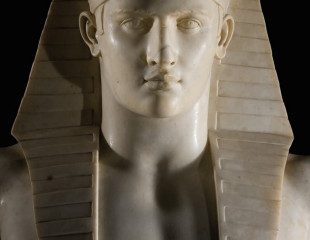
Winckelmann
Masterpieces throughout the Vatican Museums
Vatican Museums
A “journey within the journey” along the entire Vatican Museums tour itinerary, a “dispersed” exhibition that from 9 November will open its doors to celebrate the great German scholar Johann Joachim Winckelmann, father of modern archaeology and precursor of today’s art historians.
Preceded and already announced in May in the study day on the Montalto Collection in Villa Negroni, “Winckelmann. Masterpieces throughout the Vatican Museums” is the exhibition of the year that symbolically brings to a conclusion the many initiatives intended to render homage to the renowned archaeologist in the dual anniversary – 300 years since his birth, and 250 since his tragic death in Trieste.
In the years of his “dazzling” stay in Rome (1755-1768), the Vatican Museums as we know them did not yet exist, but Winckelmann already visited the Vatican Belvedere and returned repeatedly to admire the statues conserved there. Indeed, it was due to his favourable judgement that many antiquities that he studied during his visits to the monuments and collections of the Eternal City were then purchased by the pontiffs. The exhibition, curated by Guido Cornini and Claudia Valeri, is intended to highlight precisely this role of the Vatican collections as a cornerstone for the studies, theories and writings of the renowned German archaeologist. All sectors of the museums have been involved in this impressive and original exhibition project that offers the visitor a thematic itinerary with several pauses for in-depth analysis, 50 to be precise, corresponding to the 50 selected works – and valued graphically and in terms of content – on the basis of the role Winckelmann attributed to them in the construction of his aesthetic thought.
Room XVII of the Pinacoteca was instead dedicated to the presentation of the figure and his age. The screening of a film and the display of some of his most important writings help to understand better the atmosphere and cultural climate that characterised the city of Rome around the mid-eighteenth century. Winckelmann arrived in 1755 for a brief stay and instead spent the rest of his life in Italy, enchanted by the grandiose beauty of the antiquities: he devoted all his attention and prodigious talent to them.




















